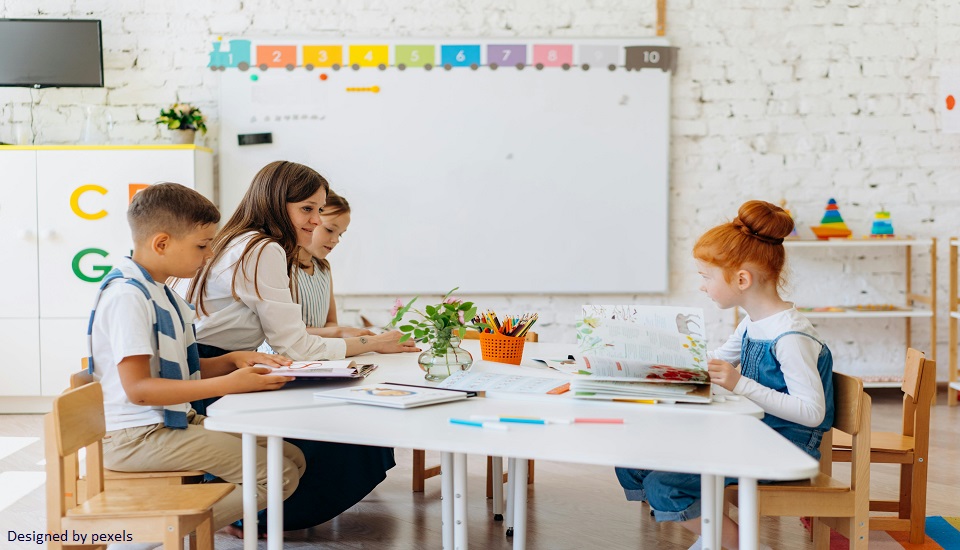Ever wondered how teachers can help students with special needs shine in their educational journey? Enter the world of remedial teaching! This amazing approach empowers special needs students, ensuring they catch up with their peers in core subjects like reading and math. It's like offering them a supportive boost, a chance to excel where they might otherwise struggle.
Remedial teaching isn’t just about catching up, it’s about empowering students by providing tailored teaching strategies that cater to their unique ways of learning. By breaking down complex concepts into manageable chunks and using engaging activities, remedial education transforms challenges into opportunities for growth, instilling confidence and independence in students. Those special needs teachers, who have pursued courses like special education teacher training courses, know it really well.
If you are curious to know more about remedial teaching methods, we have got you covered.
Get ready to explore how you can make learning a joyful adventure for every special needs student with remedial teaching method!
Understanding Remedial Teaching
Remedial teaching is a beacon of hope for students with special needs, bridging gaps in their learning and providing tailored support to meet their individual needs. It's not just about catching up, it's about empowering students to reach the same level as their peers.
This specialized education spans essential academic skills, focusing intensely on literacy and numeracy. By catering to students' unique learning needs through personalized strategies, remedial teaching helps break down complex concepts into manageable pieces.
The goal is not only to improve academic performance but to foster independence and bolster confidence. It involves strategies such as repetition, refined practice, multisensory approaches, and individual attention to ensure students can overcome their learning obstacles. Innovative methods, including the use of visual aids and technology, keep the learning process dynamic and engaging.
Before you move to the topic, can we ask you a quick question? Do you follow us on Social Media? If not, then you’re missing out on a lot of informative content. We regularly share upgraded educational content, tips, feedback, and more. Check us out by clicking the profiles here – Facebook / Twitter / LinkedIn / Pinterest / Instagram / YouTube
Types of Learning Disabilities
Let’s get to know the different types of learning disabilities that your special needs students might have:
Dyslexia, Dyscalculia, and Dysgraphia
Understanding the specific learning disabilities—Dyslexia, Dyscalculia, and Dysgraphia is crucial for providing effective support.
- Dyslexia: Dyslexia is a reading disorder characterized by difficulties with phonetic understanding, often unrelated to the individual's intelligence.
- Dyscalculia: Dyscalculia involves challenges with mathematical operations.
- Dysgraphia: Dysgraphia manifests as problems with writing, despite adequate instruction.
Each of these disabilities affects academic performance differently, necessitating targeted teaching methods.
Importance of Recognizing Signs of Learning Disabilities
Recognizing the signs of learning disabilities early can significantly enhance a student's educational journey. Indicators can range from difficulties in reading, writing, and math, to poor memory skills and attention problems. Look for struggles such as slow reading speed, frequent writing errors, trouble understanding math concepts, or inability to focus.
Physical signs like poor coordination or delayed speech might also indicate an underlying issue. Detecting these patterns allows educators and parents to seek professional assessments, ensuring that interventions are timely and effective. With the right support, students can overcome these challenges and achieve educational success.
Key Components of Remedial Education
Let’s get to know some of the key components of remedial education:
Personalized Attention and Tailored Strategies
One of the main pillars of remedial education is providing personalized attention to cater to the unique needs of each student. Recognizing the diversity in learning styles and challenges, this approach aims to tailor educational strategies to fit individual requirements. Personalized strategies might involve different learning activities, from small, practical exercises to breaking down complex concepts into manageable pieces.
By focusing on engaging in small activities rather than overwhelming tasks, this method helps students not only cope with their learning difficulties but also thrive academically. Such customization makes learning relatable and effective, encouraging students to attain age-appropriate competence in vital academic skills like reading, writing, and math.
Use of Multi-Sensory and Technological Approaches
Integrating multi-sensory and technological methods can significantly enhance remedial teaching's effectiveness. Multi-sensory techniques engage various senses, such as visual, auditory, tactile, and kinesthetic, to make learning an immersive and enjoyable process.
When students leverage more than one sense, it enhances comprehension and retention, turning their learning journey into an adventure! Additionally, the use of technology provides innovative ways to support students. Educational apps and multimedia resources adapt to individual strengths, helping students grasp challenging concepts while keeping them engaged and motivated.
Group-Based vs. Individual Remedial Teaching
Both group-based and individual remedial teaching offer unique benefits. Group-based approaches create a cooperative learning environment where students with similar challenges interact and learn from each other. This setup not only improves academic outcomes but also nurtures crucial social skills and peer relationships.
On the other hand, individual teaching provides focused, one-on-one attention, allowing educators to closely assess each student's specific needs. This method ensures the teaching strategies are acutely aligned with each student’s learning obstacles, making it easier for them to overcome these hurdles with precision and personalized care.
Benefits of Remedial Teaching for Special Needs Students
Let’s get to know how remedial teaching methods can benefit every special needs student in your classroom:
Boosting Confidence and Independence
Remedial teaching is an empowering tool, particularly when it comes to enhancing a student’s self-confidence and independence. By celebrating their achievements and focusing on their strengths, students gradually build a positive self-image.
Completing tasks successfully and overcoming personal academic challenges fosters a sense of accomplishment and motivation. As students gain confidence, they also become more self-reliant, equipped with strategies to tackle obstacles independently in both academic and everyday situations.
Enhancing Cognitive and Social Skills
Apart from academic improvement, remedial teaching plays a critical role in honing cognitive and social skills. The multi-faceted learning activities involved can enhance cognitive abilities by improving attention span, memory retention, and information processing skills.
Moreover, group interactions aid in building social skills, as students learn to communicate effectively, cooperate with peers, and develop empathy through shared experiences. This dual enhancement ensures that students not only catch up academically but also grow into socially adept individuals, ready to face future challenges with a solid foundation.
Strategies for Effective Remedial Teaching
Let’s get to know some of the effective strategies for implementing remedial teaching methods in your special needs classroom:
Preparing Learning Plans and Activities
One of the primary strategies for effective remedial teaching is crafting individualized learning plans and activities. It's essential to assess each student's unique learning needs and capabilities before creating a plan. Understanding how special needs students learn best allows educators to design a series of smaller, targeted activities, rather than overwhelming them with extensive tasks all at once.
Incorporating diverse activities, such as games or interactive discussions, can make learning more engaging for students. Consequently, fun and lively sessions improve students' interest and eagerness to learn, boosting their ability to understand and retain concepts.
Developing Clear Instructions and Teaching Techniques
Clear, concise instructions are pivotal for students with special needs. Many students may struggle with written or ambiguous guidance, so it's vital to provide instructions that are straightforward and leave no room for misunderstanding. Start with real-world examples and proceed step-by-step, ensuring a comfortable pace for the student.
Employ teaching approaches that use a combination of auditory, visual, and kinesthetic methods to cater to various learning styles. Techniques like multisensory education engage multiple senses and can significantly enhance the learning experience by making it more relatable and easier to grasp.
Utilizing Visual Aids and Interactive Methods
Incorporating visual aids and interactive teaching methods can greatly support students with special needs. Visual tools, such as pictures, charts, and videos, help in breaking down complex ideas into easier-to-understand parts, making them accessible for learners who may struggle with traditional text-based instruction.
Interactive methods, such as digital learning platforms or educational apps, further enhance engagement by allowing students to interact with the material in a dynamic way. These approaches not only make learning enjoyable but also promote better retention and comprehension by actively involving students in the learning process.
To End With
Empowering special needs students through remedial teaching is like unlocking a treasure trove of potential! By employing personalized learning strategies and leveraging diverse teaching methods, educators can make a world of difference in these students' lives. Strategies such as multi-sensory education, technology-supported learning, and peer-aided activities enrich the learning environment and cater to individual needs. The impact is profound, students not only improve academically but also gain confidence and independence.
With continuous dedicated support, patience, and innovative approaches from teachers who have pursued courses like special education teacher training courses, every special needs student holds the promise of success on their learning journey.
Let's continue to embrace inclusive education and inspire a brighter future for all special need students!
We believe education should be accessible to everyone. That’s why we don’t charge for our blogs. Find the right course that will help you in your career with us, contact us at - 1800–212–6400. You can mail us at act@asiancollegeofteachers.com.
Written By : Abhishek















